The Celera 500L Just May Revolutionize Business Aviation
Its unusual shape helps it travel more miles on a single tank of gas.
/https://tf-cmsv2-smithsonianmag-media.s3.amazonaws.com/filer/bb/2c/bb2cfaca-e4d9-4b93-b724-4a42a9bc16cb/01k_on2021_disruptorbillotto_lizadeckelbaumimg_1570_live.jpg)
Sky watchers in the windswept high desert town of Victorville, California, have seen a dazzling array of airplanes over the past 80 years, from the fighters and bombers that flew into the local airfield when it was George Air Force Base to hundreds of about-to-be-mothballed airliners after the former military installation became the Southern California Logistics Airport. But they’ve never seen anything like the Celera 500L. Nobody has.
Shaped like an elongated egg with wings and a stubby propeller hanging off the tail, the 500L is designed to leverage the benefits of laminar flow—an aerodynamic advantage that increases efficiency in flight by minimizing drag—to an extent never before seen in a production airplane. At the moment, the prototype is collecting flight data to see just how well extremely low drag across an entire airframe will translate into performance.
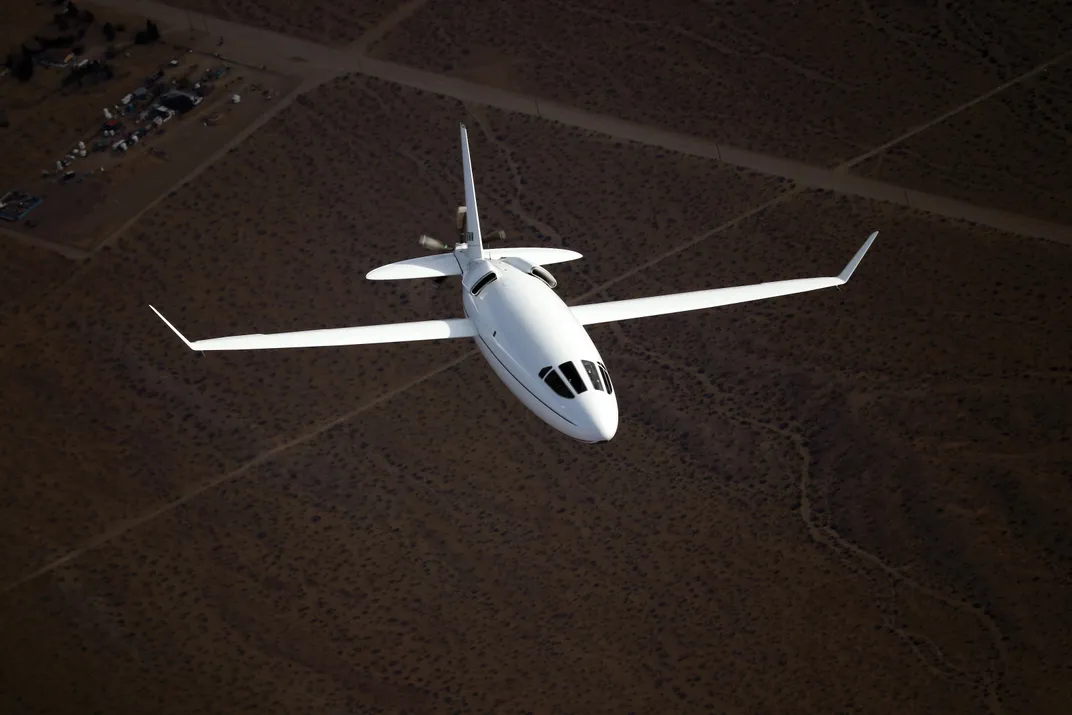
Former Canadian astronaut Bjarni Tryggvason, a veteran of space shuttle mission STS-85, is at the controls as the prototype effortlessly gains altitude. For this test hop, Tryggvason plans to cruise at a sedate pace—maybe 250 miles per hour—while Len Fox, flying chase in a sleek twin-engine Piper Navajo, collects infrared images of the Celera. Tryggvason is loping along, barely using half the power at his disposal. So he’s surprised to hear Fox’s voice on the radio, sounding perturbed.
“Can you slow down some?” Fox says. “I can’t keep up with you.”
The Navajo might not be the only airplane left behind. Otto Aviation, the southern California startup behind the new Celera, is promising new standards for speed, range, and fuel economy that would trounce rivals like the turboprop Pilatus PC-12 and the twin-engine Beechcraft King Air, while stacking up favorably with business jets. The relevant numbers? A cruise speed of 460 mph at 50,000 feet, with a range of 4,500 nautical miles. And, the company claims, it will be five times more cost-effective and eight times more fuel-efficient than bizjets with comparable performance, thanks to the super-smooth laminar flow surfaces, high-aspect-ratio wings, and an innovative, lightweight V-12 diesel engine. It’s more efficient than other turboprops too.
“In the classic [turboprop] airplane world, you’re scrubbing for half-a-percent improvement here or there,” says Otto Aviation chief technical officer David Bogue, who began his career at Boeing working on the 737-700. “With this aircraft here, we’re looking at a 400 percent improvement. It’s just fantastic!”
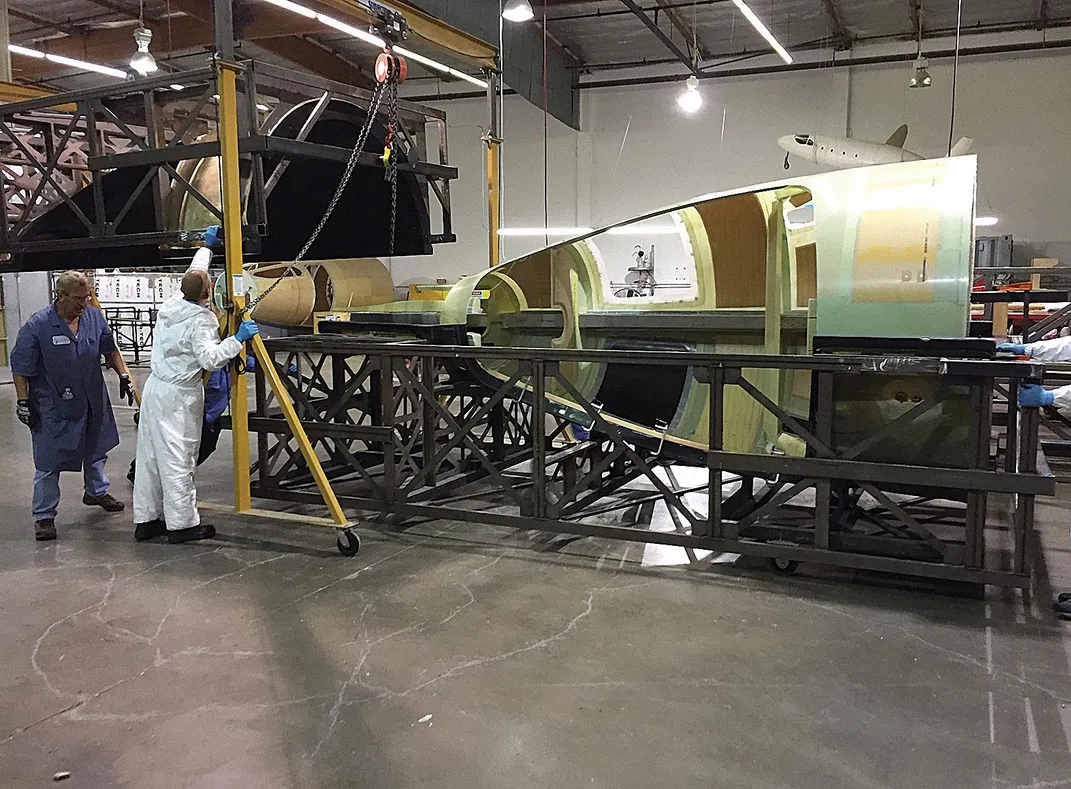
The Celera 500L has been likened to a blimp, a World War II drop tank, and a bloated version of the Bell X-1 that Chuck Yeager flew through the sound barrier. But on one point, almost everybody agrees: The airplane sounds too good to be true. “I want to believe, but it sounds like a tall order,” says Richard Aboulafia, vice president of analysis for Teal Group. “Getting something airborne is the easy part. But getting something certified is a long process that inevitably results in changes, which, of course, can impair ambitious performance goals.”
For critics, the Celera 500L is weighed down by another piece of baggage. Its creator, Bill Otto, isn’t even an aeronautical engineer. In fact, this is the first airplane he’s ever designed. But he doesn’t see his lack of experience as a drawback. On the contrary, he says, his outsider’s perspective is precisely what allowed him to seize on laminar flow and follow it to its logical conclusion.
“Engineers tend to look at what has been done and see how that can be applied,” Otto says. “My approach is not to do that. It’s to figure out what has to be done to satisfy the requirements and then do that unless it’s prohibited by something that has gone before.” He’s equally dismissive when asked why nobody ever tried to put a laminar-flow airplane into production even though the advantages have been obvious for decades. “Well,” he says, “I think the real reason was that they were selling all the tin they could bend, so why bother?”
A plainspoken, 77-year-old Texan now living in southern California, Otto has always gone his own way. After working briefly as a research scientist at the Los Alamos National Laboratory, he hired on at North American Aviation and was assigned to a variety of projects—a guidance system for the Minuteman missile, an inertial navigation system for the Navy’s A3J attack bomber (which became the A-5 Vigilante), and a Navy torpedo. When he was named chief scientist of the B-1A avionics study program (North American had become part of Rockwell by that time), he bailed from the company because he thought—correctly, as it turned out—that the airplane was a dud.
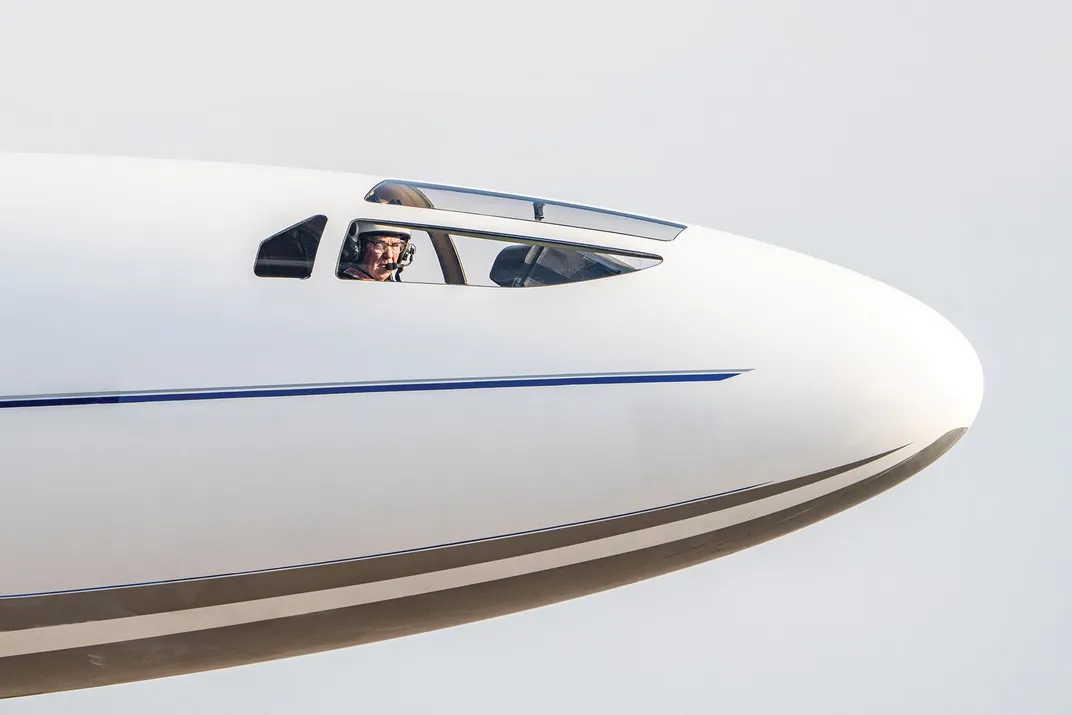
Before long, he was traveling regularly around the world as an accident reconstruction analyst called on to testify as an expert witness. One of his trips required a helicopter hop, two airline legs to cross the continent, and a long drive in a rental car. When he finally reached the accident site, he realized there was a small airfield nearby.
“I decided that this was nonsense,” he recalls. “When I came home, I said to my partner, ‘How about we buy a plane and just fly direct?’ We started doing some investigating. What we found was that we could buy a general aviation aircraft and fly slow for 500 miles, stop and refuel, or we could buy a retired military aircraft and fly fast for 500 miles, then stop and refuel. Neither one of them made any economic sense. Well, I got curious. Why is it that general aviation aircraft are so horribly inefficient? What I discovered was that our torpedo research at North American might have some applications.”
During the mid-1960s, while working on torpedoes for the Navy, Otto helped with an unconventional design called the “Dolphin,” its shape inspired by an airfoil developed by the National Advisory Committee for Aeronautics—NASA’s predecessor—to minimize drag by taking advantage of the aerodynamic principle of laminar flow. After numerous tests, the Navy passed on the torpedo. But not because it failed to deliver. In fact, it was just the opposite, according to a paper published nearly a half-century later in the Journal of Hydronautics.
“A significant drag reduction was noted,” the authors wrote, “the Dolphin having half the drag of a conventional torpedo [under similar conditions]. The low drag was achieved primarily by the Dolphin’s ability to maintain a long run of laminar boundary layer.”
As a wing moves through air—or as a torpedo moves through water, which is much the same thing in terms of fluid dynamics—it creates drag. Exactly how much drag is determined largely by the characteristics of the air (or water) flow. If the air currents move smoothly in parallel contours—imagine playing cards sliding into a deck—the flow is said to be laminar. If the air is chaotic and tumbling, the flow is considered turbulent. You can visualize laminar flow transitioning into turbulent flow by watching smoke rise from the tip of a lit cigarette. The smoke first travels in a thin, solid line before swirling into eddies. Those eddies in the air around an airplane—turbulence—cause drag, which slows the airplane and wastes fuel.
The P-51 Mustang is said to be the first airplane designed to maximize laminar flow, but the benefits were extremely modest. Since then, dozens of airplanes have been modified for laminar-flow experiments, from fighters and X-planes to airliners and business jets. Laminar flow is a core element in the design of many sailplanes, and the technology has been incorporated in numerous production aircraft, such as the Boeing 787, HondaJet, Piaggio Avanti, and Cirrus SR22, as well as the Cirrus light jet. But most laminar flow research has focused on wings. Otto believes the Celera 500L will be the first airplane certified by the Federal Aviation Administration to feature a truly holistic approach to laminar flow surfaces—one where the fuselage, wings, and other surfaces all work together to counter turbulent airflow.
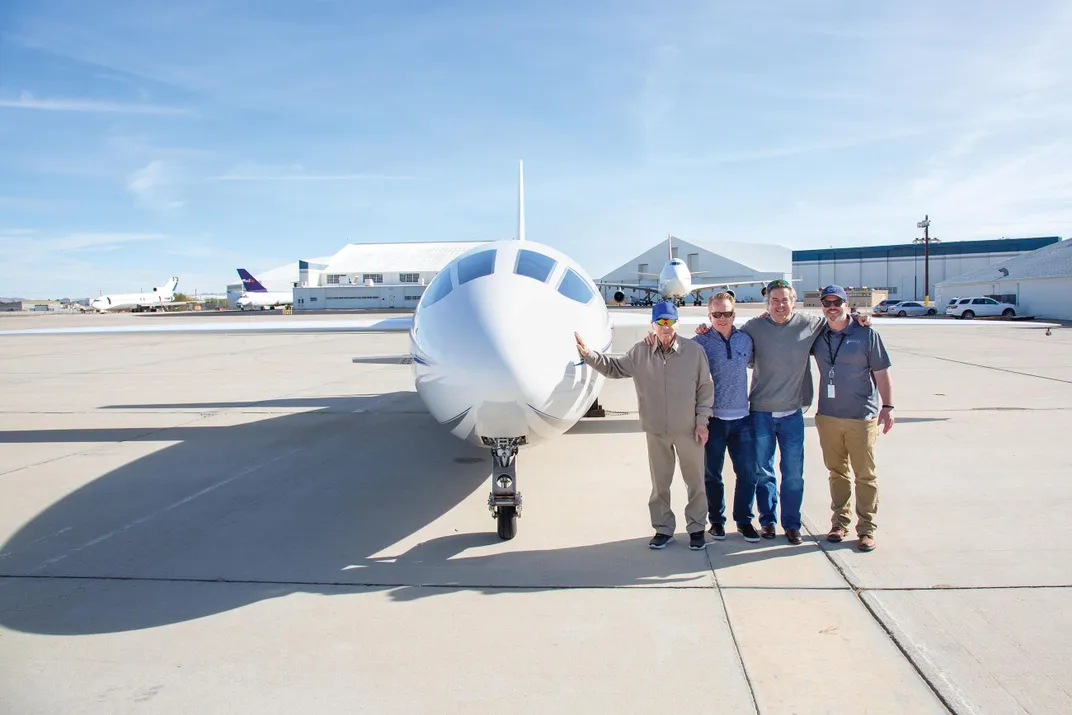
Why has it taken so long? A bunch of reasons. Laminar flow structures don’t scale well—to the size of an airliner fuselage, for example. And the surfaces themselves have to be shaped to extremely fine tolerances. The precision required means that metal isn’t an ideal construction material. In flight, small impediments—ice on the wings or even dead bugs on the leading edge—can be enough to cause the flow to turn turbulent. “Designs which push laminar flow to the limit tend to suffer from compromises in handling qualities or structural efficiency,” a group of British aerodynamic experts wrote in an article about the Celera 500L in a recent Royal Aeronautical Society newsletter. “Another consideration is that, because of the susceptibility to surface degradation…laminar flow tends not to be totally reliable in service.”
For Otto, ignorance of these problems was bliss. All he knew was the science, and when he ran the numbers, they suggested that an airplane designed around wings, a fuselage, and an empennage that maximized laminar flow could be a game changer. First he built a 1/10th-scale model and tested it in a small, homemade wind tunnel. Then he upgraded to a radio-controlled, one-third-scale model and fitted it with a 16-horsepower chainsaw engine. Flown noisily by champion RC pilot Larry Jolly, it went 130 mph despite its fixed landing gear.
“It was pretty spectacular, frankly,” Otto says with a laugh. “A lot of people wondered how that strange airplane could go that fast.”
The unconventional shape was the product of Otto’s clean-slate thought process. The bulging fuselage—think pregnant airliner—was an artifact of the airfoil he chose to use to optimize laminar flow. Purely by serendipity, the broad cross-section turned out to be ideal for accommodating six passengers in the sort of luxury you’d expect from first-class service on an airliner.
Which got Otto to thinking.
At first, this had been a self-funded nights-and-weekends project to build an experimental airplane for Otto’s personal use. But as the benefits of the cabin became clear, wheels started turning. “We thought, ‘Golly, this can be a huge business,’ ” says Otto’s eldest son, Bill Jr., a University of Texas MBA recently named CEO who founded Majestic Pet Products before joining the aviation company as chief financial officer. “This airplane has direct operating costs of $328 per hour, which basically includes all your fuel and maintenance for both the airframe and the engine. That allows you to offer private transportation at prices that are competitive with commercial airfares.”
In 2008, Otto Aviation was incorporated, and construction of the airplane commenced in 2015. To date, Bill Jr. says, the company has raised more than $50 million, and he expects to spend another $200 million by the time the airplane is certified, hopefully no later than 2025. The relatively quick pace of development is due to his father’s bold decision to build most of the airplane in-house with about 35 employees in Orange County and Victorville.
/https://tf-cmsv2-smithsonianmag-media.s3.amazonaws.com/filer/b1/1f/b11f3c92-acdb-40fa-80b6-1a6b710b8272/01f_on2021_disruptorbillotto_celera500l-04518_live.jpg)
Because the tolerances necessary to achieve laminar flow are so fine—even the protruding heads of rivets holding wing skins in place can cause airflow to become turbulent—the company fabricates all of the airframe parts in its composite shop. The wings and empennage are carbon fiber, and while the fuselage of the prototype was made of fiberglass because it was cheaper, it too will be carbon fiber on the production model. Meanwhile, the Otto Aviation machine shop was responsible for meticulous metalwork to make, among other parts, the landing gear.
Components such as the avionics and pusher propeller are bought off the shelf. Otto originally considered an aviation derivative of a Chevrolet V-8 as the powerplant before discovering an innovative, clean-sheet turbocharged V-12 engine designed by German manufacturer RED (Raikhiln Aircraft Engine Development). The engine’s two six-cylinder banks can be operated independently of each other; if there’s a problem in one bank, the other continues to provide power. Besides this safety enhancement, the engine boasts extreme fuel efficiency. In the future, Bogue says, the capacious rear-mounted engine bay could be filled with an electric motor or, better still, a hydrogen fuel cell.
By corporate design, Otto flew under the radar until a grainy photo of the 500L, shot through a chain-link fence at the Victorville airport, appeared on the website The Drive. The odd shape with no passenger windows—an omission that will be addressed in the production version—led to wild speculation. Was it a movie prop? High-altitude cryogenic-fuel testbed? North Korean spyplane?
Even after the first flight in 2018 and the press releases that followed, the airplane was regarded with skepticism because the performance claims seemed so outlandish. But the more Bogue learned, the more he liked the project. He left Boom Supersonic, another aviation startup, to join Otto after his aerodynamic consulting work for the company convinced him that the 500L was destined to be a winner because it beat the competition in three areas—less drag due to laminar flow, improved performance from the thin, high-aspect-ratio wing, and better fuel economy from the piston engine. “If you look at it from a first principles point of view, the physics are there,” Bogue says. “When I looked at the performance numbers, they were really compelling.”
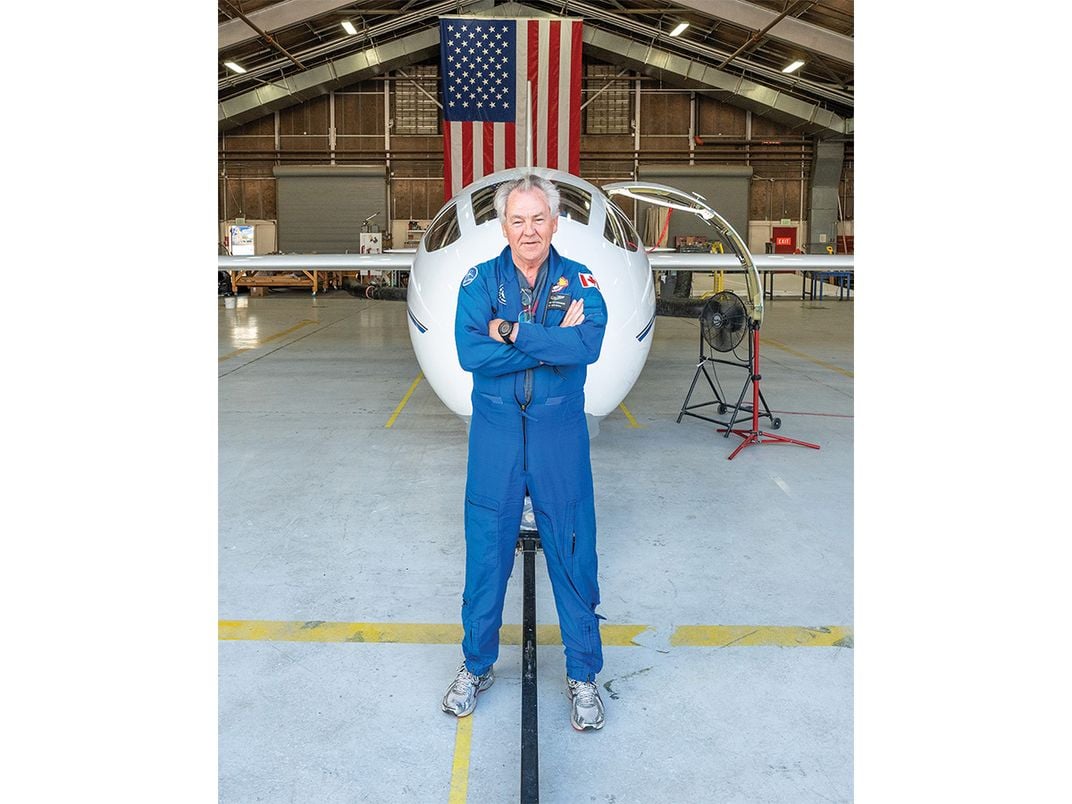
The Celera 500 is not the first radical airplane to boast stunning performance in the prototype stage. In 1983, Beech Aircraft Corporation (then part of Raytheon) introduced at the National Business Aviation Association convention a twin turboprop that, in the words of a former Beech president, looked “like a Klingon battle cruiser.” The Beech Starship was to deliver jet-like performance—nudging a cruise speed of 400 mph—at cheaper turboprop operating costs. It missed its performance goals, and only 53 were built.
“Marketing a non-conventional aircraft design, even one with exceptional performance characteristics, to a highly conservative buyer universe has been a challenge for other platforms,” says Adam Cowburn, managing director and co-founder of Alton Aviation Consultancy. “Otto Aviation has the advantage that it is now trying to raise capital with an actual flying prototype in hand; however, a diligent investor would also seek to assess how the company intends to tackle challenges such as sales strategy and product support, among others.”
Here we may be getting ahead of ourselves. Tryggvason and two other test pilots put the prototype through 31 flights before the pandemic halted the program in March 2020. As with any new airplane, the control systems required tweaking to make the handling more benign, but Tryggvason didn’t encounter anything unexpected. “I think it’s going to be a very nice flying airplane by the time we’re running along on the production side,” he says. “I have no doubt that you will be able to fly this ship with half-a-knot accuracy in speed.”
With a big turbo-diesel buried in the back of the fuselage, engine cooling was bound to be an issue. But even with ungainly nacelles housing radiators attached to the body, Otto says he’s pleased with the numbers. “I calculated 30 miles per gallon based just on cruise,” he says. “Given that right now we’re at 18 to 26 miles per gallon, including the takeoff roll and the climb-out, we’re actually very close to what I predicted way back when.”
The crew is expanding the flight envelope now that flight-testing has been resumed. Eventually, the nacelles will be eliminated by replacing the radiators with heat exchangers submerged inside the fuselage. The addition of a second turbo will allow flights up to 38,000 feet. Three-stage turbocharging will be needed for the airplane to reach its ceiling of 50,000 feet.
The Celera 500L is expected to sell for between $4.5 million and $5 million, about the same cost as the popular seven-passenger HondaJet. But the Honda has almost triple the operating cost.
For the next few years, when Victorville residents see an airplane in the sky that vaguely resembles a flying egg, they won’t know exactly what they’re looking at. Is it merely an oddity, or is it the future of aviation?